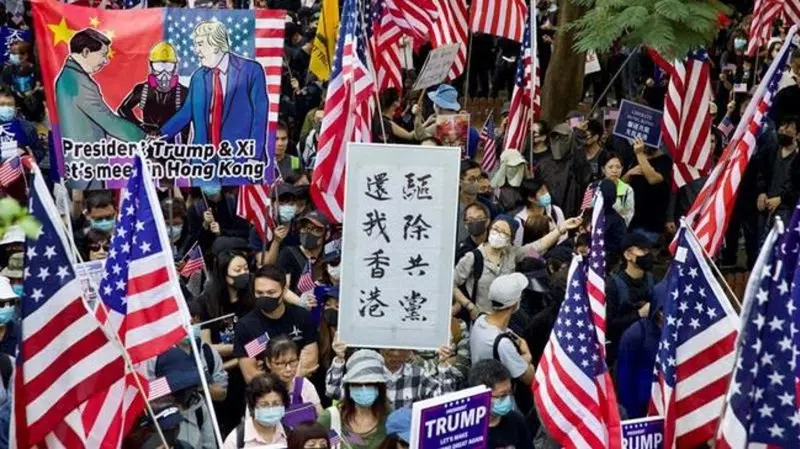
Anti-establishment views unite, divide Hong Kong protesters
HONG KONG — Trump signs, Pepe the Frog graffiti and British and American flags have become a common sight at Hong Kong’s anti-government protests — and an unsettling one to longtime democracy activists on the left.
Beijing has seized on the images to portray the movement as a coddled, westernized middle class incited by foreign organizations and governments to rebel against the world’s largest communist country, China.
“Why does the American flag appear at every violent scene in Hong Kong?” state broadcaster CCTV asked.
Many of Hong Kong’s hardcore protesters are working-class construction workers and hairstylists battling an establishment government dominated by business interests and real estate tycoons. Some wave U.S. and other flags to appeal to the rest of the world for support.


